OnePlus Announces OnePlus 9R, OnePlus 9 & OnePlus 9 Pro
by Andrei Frumusanu on March 23, 2021 10:00 AM EST- Posted in
- Mobile
- Smartphones
- OnePlus
- Snapdragon 888
- OnePlus 9
- OnePlus 9 Pro
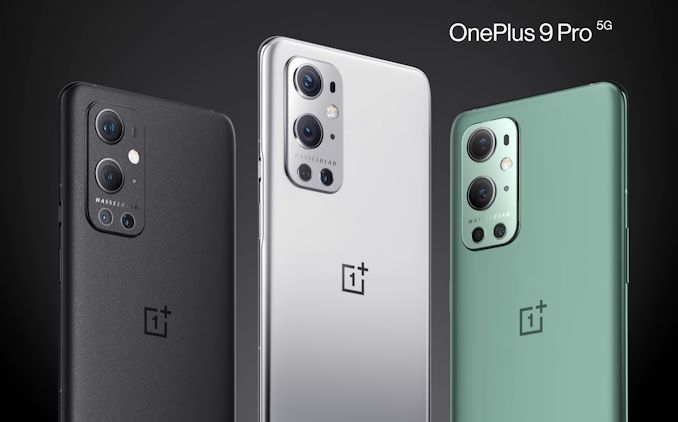
Today OnePlus is launching their new 2021 line-up of flagship devices, the new OnePlus 9 series. This year, the company is refining its formula that it had employed in 2020 following the successful OnePlus 8 series, doubling down on aspects that make the company’s devices no longer value alternatives to the competition, but outright amongst the best devices you can get on the market.
OnePlus is launching three devices today, the regular new OnePlus 9, the OnePlus 9 Pro, and a more budget oriented refresh in the form of the OnePlus 9R. The OnePlus 9 Pro follows in the footsteps of the 8 Pro last year in that it’s a no-compromise device, and this year OnePlus is again equipping the phone with the best possible display hardware that’s available on the market. Also, a change in the usual model line-up is the fact that both the OnePlus 9 and OnePlus 9 Pro feature the same two new-generation camera modules and sensors, with OnePlus promising great advances in photography and picture quality in collaboration with Hasselblad – an area in the last few generations which was admittedly a weak-point for the company in the last few generations.
| OnePlus 9 Series | |||
| OnePlus 9R | OnePlus 9 | OnePlus 9 Pro | |
| SoC | Snapdragon 870 1x Cortex A77 @ 3.2GHz 3x Cortex A77 @ 2.42GHz 4x Cortex A55 @ 1.80GHz Adreno 650 @ 670MHz |
Qualcomm Snapdragon 888 1x Cortex-X1 @ 2.84GHz 1x1024KB pL2 3x Cortex-A78 @ 2.42GHz 3x512KB pL2 4x Cortex-A55 @ 1.80GHz 4x128KB pL2 4MB sL3 Adreno 660 @ 840MHz |
|
| Display | 6.55-inch FHD+ 2400 x 1080 (20:9) 120Hz Refresh Rate |
6.7-inch QHD+ 3216 x 1440 (20.1:9) 120Hz Refresh Rate LTPO HW VRR |
|
| SAMOLED HDR10+ |
|||
| Dimensions | 161.0 x 74.1 x 8.4 mm 189g |
160.0 x 74.2 x 8.7 mm 192g |
163.2 x 73.6 x 8.7 mm 197g |
| RAM | 8/12GB LPDDR4X | 8/12GB LPDDR5 | |
| NAND Storage |
128/256 GB UFS 3.1 | 128/256 GB UFS 3.1 | |
| Battery | 4500mAh (17.41Wh) typ. | ||
| 65W Warp-Charge (Proprietary) 45W USB-PD |
|||
| - | 15 Qi Wireless |
30W Wireless Fast Charging (only via proprietary charger) 5W Qi Wireless |
|
| Front Camera | 16MP Sony IMX471 f/2.4 |
||
| Primary Rear Camera | 48MP 0.8µm 1/2" IMX586 (12MP 1.6µm 2x2 binning) f/1.7 w/ OIS |
48MP 1.12µm 1/1.4" IMX689 (12MP 2.24µm 2x2 binning) f/1.8 w/ OIS 23mm equivalent |
48MP 1.12µm 1/1.4" IMX789 (12MP 2.24µm 2x2 binning) f/1.8 w/ OIS 23mm equivalent |
| Secondary Rear Camera |
Ultra-Wide-Angle 16MP IMX481 123° FoV |
Ultra-Wide-Angle 50MP 1.0µm 1/1.56" IMX766 Rectilinear Free-Form Optics f/2.2 14mm equivalent |
|
| Tertiary Rear Camera |
5MP Macro | - | 3.3x Telephoto 8MP OV08a10 w/ OIS |
| Extra Camera |
2MP Monochrome | 2MP Monochrome | 2MP Monochrome |
| 4G / 5G Modem |
X55 (Discrete) (LTE Category 24/22) DL = 2500 Mbps 7x20MHz CA, 1024-QAM UL = 316 Mbps 3x20MHz CA, 256-QAM |
X60 integrated (LTE Category 24/22) DL = 2500 Mbps 7x20MHz CA, 1024-QAM UL = 316 Mbps 3x20MHz CA, 256-QAM (5G NR Sub-6 + mmWave) DL = 7500 Mbps UL = 3000 Mbps |
|
| SIM Size | NanoSIM + NanoSIM | ||
| Wireless | 802.11a/b/g/n/ac/ax BT 5.2 LE, NFC, GPS/Glonass/Galileo/BDS |
||
| Connectivity | USB Type-C no 3.5mm jack |
||
| Special Features | On-screen fingerprint sensor, Stereo Speakers |
On-screen fingerprint sensor, Stereo Speakers |
|
| Launch OS | Android 11 w/ Oxygen OS | ||
| Launch Prices | 8+128GB: ₹39 999 12+256GB: ₹43,999 |
8+128GB: $729 / £629 / 699€ 12+256GB: £729 / 799€ |
8+128GB: $1069 / £829 / 899€ 12+256GB: £929 / 999€ |
Starting off with the new OnePlus 9 and 9 Pro, both devices now feature the new Snapdragon 888 SoC from Qualcomm. We’ve extensively reviewed the chip in our coverage of the S21 Ultra, and whilst generationally it might not be as great as we’ve been used to in the last few years, it’s an improvement and will likely have no issues in giving you excellent device experiences in these new smartphone models.
The lower-end model OnePlus 9R uses Qualcomm’s new higher-binned Snapdragon 865 variant called the Snapdragon 870 – essentially a faster variant of the 865+ with main CPU clocks of up to 3.2GHz. It’s to be noted that the actual performance differences between this chip and the newer Snapdragon 888 in the 9 and 9 Pro should be rather small, so it’s definitely a valid way to create a more budget flagship device this year.
OnePlus keeps the DRAM and memory configurations similar this year with either 8 or 12GB of main memory, alongside 128 or 256GB storage options. The storage has been updated to a faster UFS 3.1 module.
The OnePlus 9 Pro: All the bells and whistles
We start off with the new OnePlus 9 Pro which is the star of today’s announcement. Following up the 8 Pro last year, OnePlus again integrates everything but the kitchen sink into the new high-tier flagship smartphone this year – however doesn’t quite go as far as to venture into the “Ultra” category of devices that have emerged with Samsung’s bigger flagship megalodons, and being followed by some other vendors.
At 163.2 x 73.6mm footprint, the OnePlus 9 Pro remains relatively mid-size by today’s standards, and is actually narrower than the 8 Pro by 0.8mm. Generally, I find this to be an important characteristic of the phone as the competition’s top-end devices keep getting bigger and heavier.
The phone’s design appears to follow closely the ergonomics of the regular OnePlus 8 last year, featuring rounded front display glass and back cover glass – however with the curvatures on both sides being more symmetrical to each other, compared to the more prominent front display curvature of the 8 Pro design. This is actually quite welcome and a big plus in my view as I had found the regular OnePlus 8 to be an extremely ergonomic device.
The star feature of the OnePlus 8 Pro is the new display – it’s still a 6.7” 3216 x 1440 resolution and 120Hz refresh rate display like the 8 Pro, however this year OnePlus has moved on to a newer LTPO panel technology and promises hardware adaptive refresh rates, much like employed in the Note20 Ultra or the new S21 Ultra. As we’ve seen on those devices, the hardware LFD/VRR is a key component to advancing battery life of the device when under 120Hz mode into usable every-day experiences. OnePlus advertises new 8192 brightness levels, indicating that the new DDIC is 10-bit capable. It’s not clear if the emitter on this display features the same new high-efficiency characteristics as on the S21 Ultra panel – but even if it doesn’t, the OnePlus 9 Pro should have among one of the best screens of any phone in 2021.
The 9 Pro comes in a glossy silver, matte green, or sandstone-like matte black finishes.
The OnePlus 9: Same primary cameras, more budget screen
In comparison to the 9 Pro, the new regular OnePlus 9 features a more cut-down display. In its dimensions it’s smaller at 6.55”, but it’s not curved, and thus doesn’t affect much the device footprint which lands in at 74.2mm width, actually larger than the 9 Pro.
It’s a 2400 x 1080 resolution screen with 120Hz refresh rate, and is of a more regular panel technology as we’ve seen in past years. The display would have to rely on more coarse software based refresh rate switching to achieve higher power efficiency at 120Hz, we currently don’t have any more details on how this is implemented on this phone.
From the back of the phone, the OnePlus 9 is extremely similar to the OnePlus 9 Pro, only differentiated by the camera setup differences. The front is more obvious as it’s a 2.5D display, being more flat for much of its surface, bar the extreme edges.
What’s quite unusual and not immediately visible from pictures is the fact that the mid-frame of the phone is made of a fibre-glass composite material, rather than metal, and a metallisation finish. It’s an interesting choice that we haven’t seen before in the industry – usually it’s the back cover which gets a material change, not the actual frame of the phone.
New Cameras: Partnership with Hasselblad?
One of the big new features of the OnePlus 9 and 9 Pro are their completely new camera setups. It differs quite considerably from the more exotic attempts we’ve seen in the market, and opts to go for a simpler, but extremely solid camera setup.
In terms of main sensor of the 9 Pro, we’re seeing a new IMX789 sensor landing in at 48MP. The sensor has 1.12µm pixels and a Quad-Bayer colour filter setup, regularly binning down to 12MP 2.24µm effective pixels. OnePlus here also advertises it’s a native 12-bit ADC capable unit, which should increase the dynamic range that the module is able to capture.
The ultra-wide sensor on the new phones is also very interesting. The sensor is a 50MP IMX766, the same sensor OPPO had used in the main camera sensors of the Find X3 Pro, featuring 1.0µm pixels that bins down to 12.5MP shots with 2µm effective pixel sizes.
What is actually most interesting about the Ultra-Wide module here isn’t particularly the sensor, but the optics. OnePlus is employing newer advanced free-form lens optics which are able to correct the distortion of ultra-wide captures into rectilinear captures, meaning that throughout the frame, straight edges remain straight. This is actually a big deal when it comes to image quality of the sensor as correcting distortions optically is infinitely higher quality than correcting them in post-processing, meaning we should be expecting much sharper images out of the OnePlus 9 and 9 Pro’s UWA’s module. Huawei had been the first to employ this technology, but only used it in the super-high end Mate 40 Pro+, which is scantily available.
Exclusive to the OnePlus 9 Pro, we also see a 3.3x telephoto module in the form of a 8MP OV08a10 sensor. How the quality of this sensor pans out compared to the main module’s native high-res modes remains to be seen. Generally, it’s interesting that OnePlus here doesn’t go much more aggressive with the telephoto, and the company resists of using some of the more exotic periscope or more aggressive sensor or optics setups compared to other competitors. I find this a rather sensible approach, and I do like if that means that the size and weight of the phone as well as the camera bump remains reasonable.
While the ultra-wide sensor between both phones is the same, the regular 8 uses lasty year’s IMX686 sensor module. The main specifications are the same in terms of 48MP 1.12µm – but the older sensor lacks the newer 12-bit capture capability and likely has the worse dynamic range compared to the 8 Pro.
Finally, the wildcard in the whole camera setup is on the part of the software. OnePlus has been marketing their collaboration with Hasselblad on the camera system, and they promise much better colour calibration this generation. We’ve seen these kinds of collaborations before in the market, most notably maybe Huawei with their partnership with Leica. This can vary from hardware co-design on the part of the optics through to actual image processing input from the partnering company. Exactly how the Hasselblad partnership will help OnePlus isn’t clear beyond their promises of more accurate colour reproductions, but at least I hope this results in better tone-mapping, gamma curves and realistic colour reproduction for the new phones, as it always had been the greatest area of weakness in past OnePlus camera implementations.
OnePlus 9R - Budget Refresh, Limited Markets
Alongside the new 9 and 9 Pro, there’s also a 9R. This is seemingly a more budget oriented device. Alongside the Snapdragon 870 SoC, the phone features the same display as the OnePlus 9, but differs considerably in the camera department.
With a 48MP IMX586 main camera sensor and a 16MP ultra-wide, the camera setup here seems to be in line with the OnePlus 8 and 8T of last year, and adds in a 5MP macro sensor alongside the enigmatic 2MP monochrome unit. Generally, I’m pessimistic about the camera quality here, particularly if OnePlus is also just inheriting the camera processing from last generation – there’s no Hasselblad partnership on this model.
In terms of availability, we won’t be seeing the 9R in western markets, with the phone being reserved only for Asian markets such as India, starting at ₹39,999.
Availabiltiy & Pricing
In terms of pricing for the OnePlus 9 and 9 Pro, things are a bit interesting as the company is employing quite different pricing strategies depending on the market.
In terms of pricing for the OnePlus 9 and 9 Pro, things are a bit interesting as the company is employing quite different pricing strategies depending on the market.
In the US, the OnePlus 9 starts at $729 which is extremely attractive and very competitive to most alternatives on the market. The 9 Pro however starts in at $1069, which is quite steep, particularly considering we’ve seen massive discounts from the likes of Samsung, with an S21 Ultra actually coming in cheaper than the 9 Pro at the time of writing. What’s to be noted here is that OnePlus seemingly isn’t offering the baseline 8+128GB model of the 9 Pro in the US.
In Europe, the pricing is also very interesting on the baseline OnePlus 9, starting at 699€ - notably undercutting the competition in this range. What’s much more interesting is the 899€ price point of the 9 Pro in the 8+128GB model. The 12+256GB model is also 999€ - actually less than the expected 1:1 conversion from USD to EUR that we typically see.





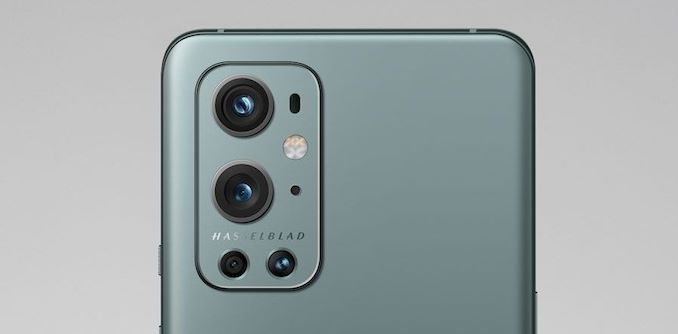




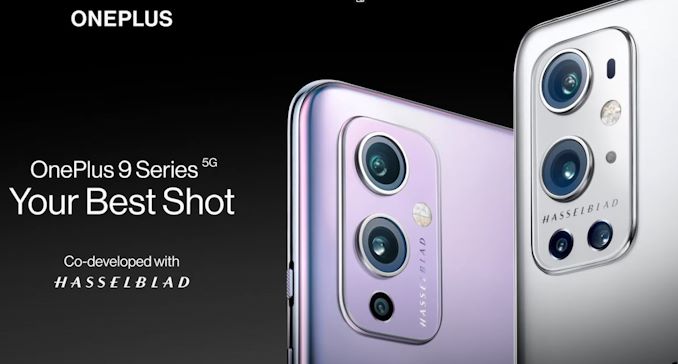
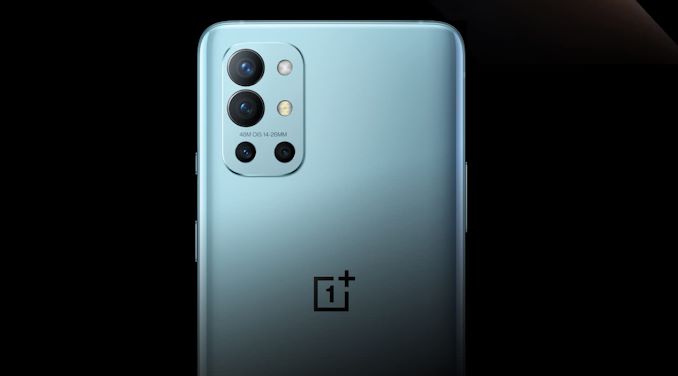
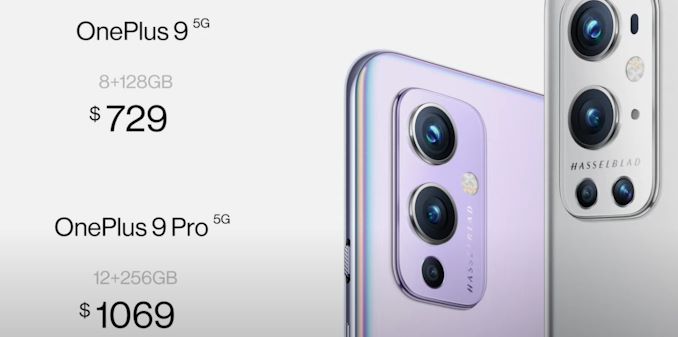
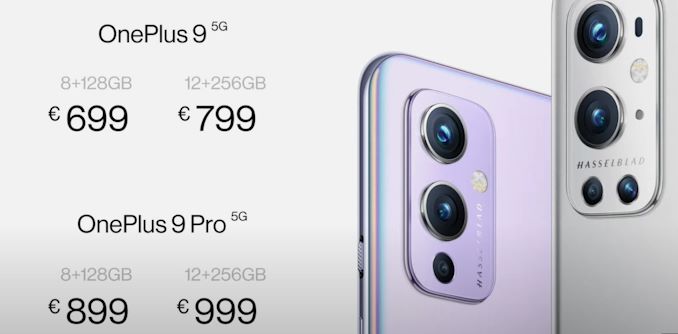








58 Comments
View All Comments
Drumsticks - Tuesday, March 23, 2021 - link
So no wireless charging on anything but what is sure to be their $1000-1200 base price device when i can get it on anything above $500 elsewhere?Not interested, and it’s a shame. It’sa noice convenience feature that I’ve come to really appreciate and there’s no particular reason you should need to compromise on it on what will definitely be an $800+ phone.
quiksilvr - Tuesday, March 23, 2021 - link
This article was rushed and riddled with typos and ? or - in the comparison table as of 10:30 EST. I am not sure why they do not wait until the event is done and just take the time to ensure all the details are revealed, THEN release the article. I expected this from Android Authority, not Anandtech.Cellar Door - Tuesday, March 23, 2021 - link
Andrei is by far the best smartphone reviewer, anywhere on the internet, and has been for years - if you are don't want to read his content, then don't. No one cares..JoeDuarte - Wednesday, March 24, 2021 - link
Disagree. I care. Lots of people expect professional quality writing.flyingpants265 - Saturday, March 27, 2021 - link
Fanboy for a smartphone reviewer?HAHAHAHAHAHAHAHAHAHAHAHAHHAHAHAHA
Smartphones suck, they can't do basic multitasking that my PC could do in 1996. And removed audio jack to make money on wireless headphones
lakedude - Tuesday, April 6, 2021 - link
flyingpants265re:
"Smartphones suck, they can't do basic multitasking that my PC could do in 1996."
Phones can multitask. My 3 year old phone would destroy any Personal Computer from 1996. It wouldn't even be close. PC's were still single core and lacked SSDs back then. Look into the DeX Pad before making silly claims about what phones can't do.
tuxRoller - Tuesday, March 23, 2021 - link
Since I'm not paying for the grammar I don't careSpunjji - Wednesday, March 24, 2021 - link
These people complaining never seem to have any issues understanding what's being said, so I'm never quite sure what their point is.JoeDuarte - Wednesday, March 24, 2021 - link
The point is professionalism. AnandTech publishes too much typo-ridden and poorly written junk.ottonis - Thursday, March 25, 2021 - link
Come on, Anandtexh is still one of the most competent and in depth hardware review sites.However, I do agree that typos do take away from the overall perception of professionalism.
Whoever the current owner of ATis, should spend some pennies and hire someone for publisher reader's or lectorate work (spell-checking etc).